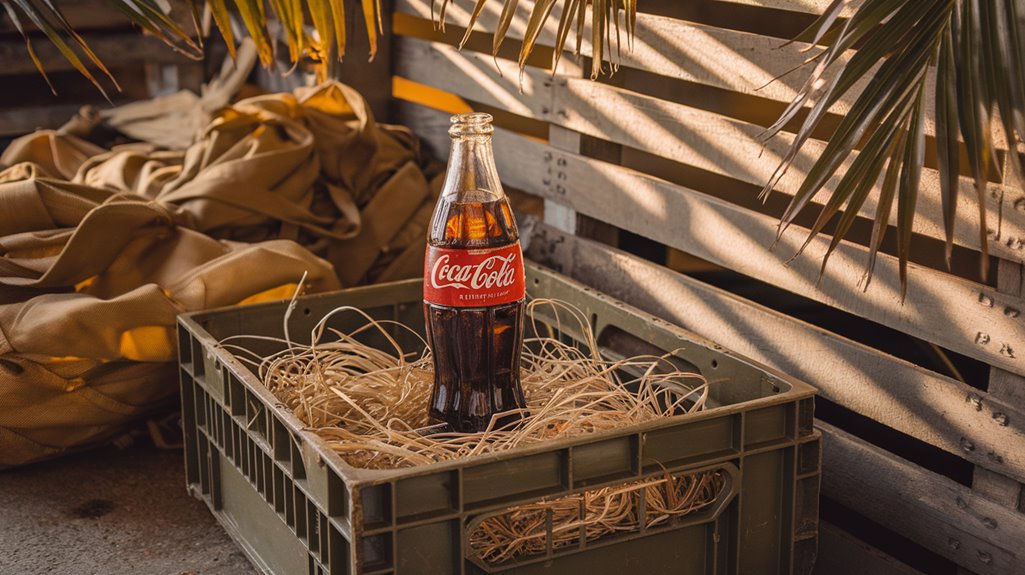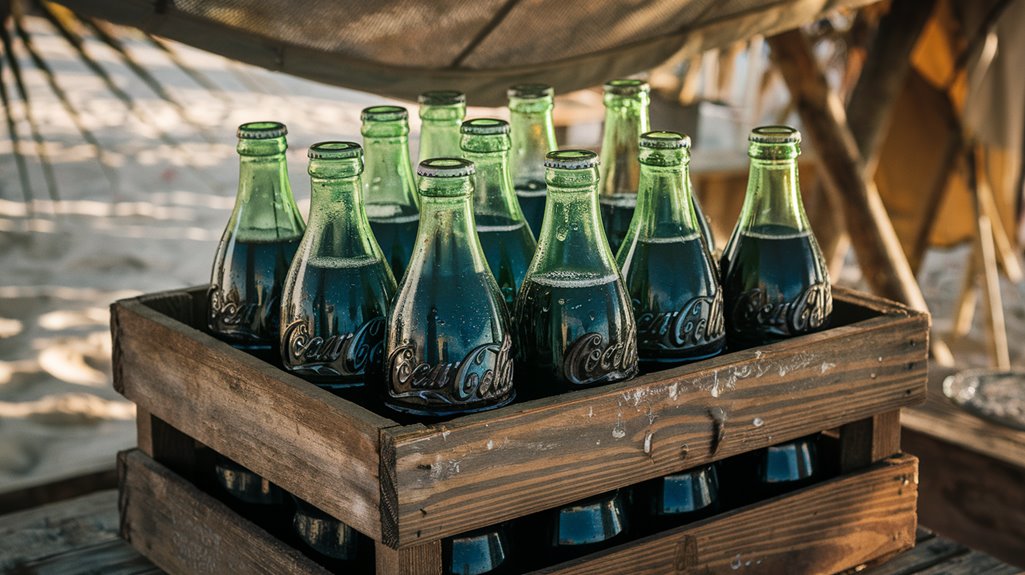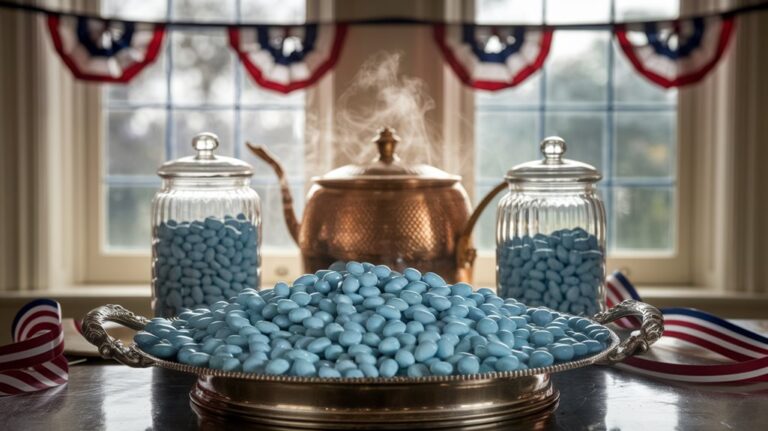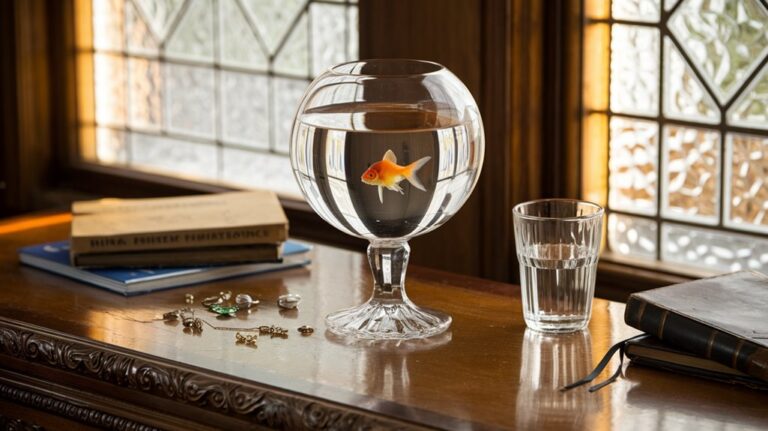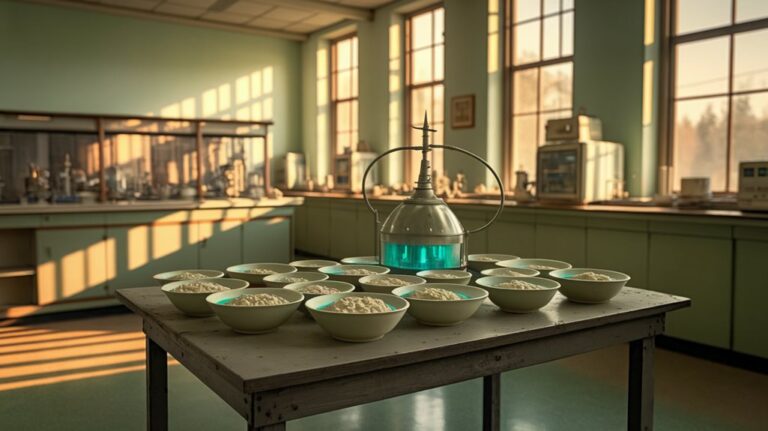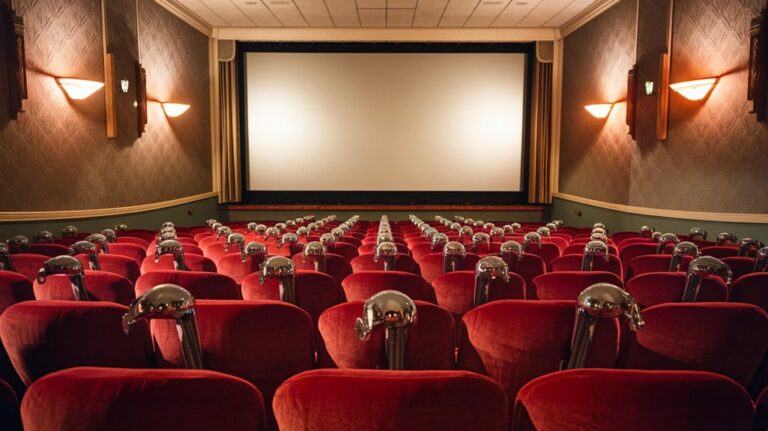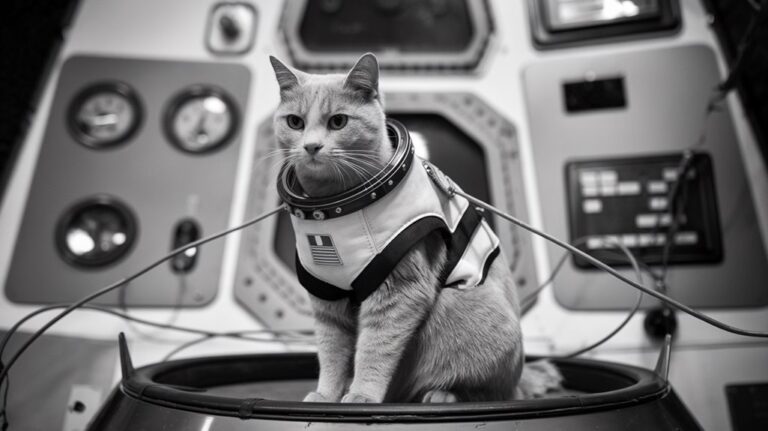How WWII Gave Birth to One of the World’s Favorite Sodas
Like the Trojan horse that transformed ancient warfare, Coca-Cola's strategic partnership with the U.S. military during World War II revolutionized the soft drink industry forever. You've probably noticed Coke's universal appeal today, but you might not know that its global dominance stems from an unprecedented wartime initiative. Through a combination of presidential backing, military coordination, and innovative distribution methods, Coca-Cola didn't just serve refreshments—it engineered one of the most remarkable brand expansions in business history.
Roosevelt's Vision: A Partnership Between Coca-Cola and the Military
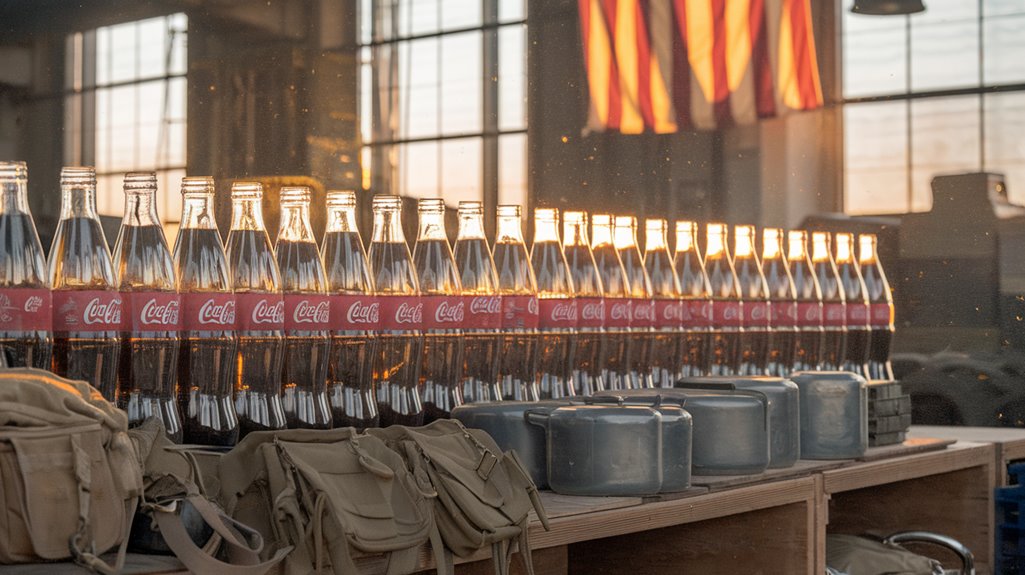
During World War II, President Franklin D. Roosevelt understood that keeping troops' spirits high was essential for victory. His unprecedented partnership with Coca-Cola president Robert Woodruff launched what would become known as "Coca-Cola diplomacy," ensuring every American soldier could enjoy a taste of home for just 5 cents a bottle. Coca-Cola Colonels served alongside troops in military fatigues to maintain supply chains.
You might be surprised to learn that Roosevelt granted Coca-Cola special sugar rations while average Americans were limited to 8 ounces weekly. This controversial decision gave the company a significant advantage over competitors like Pepsi.
To boost military morale, Coca-Cola deployed Technical Observers into combat zones and established portable bottling plants near the front lines. With General Eisenhower's support in 1943, the initiative expanded globally, delivering over 5 billion bottles to service members throughout the war. Even POWs in American camps received Coca-Cola with their daily rations as a gesture of goodwill.
The Eisenhower Effect: Building Bottling Plants in War Zones
As General Eisenhower witnessed American troops yearning for familiar comforts, he made an unprecedented request to Coca-Cola's Atlanta headquarters: 10 portable factories capable of producing 6 million bottles monthly.
The bottling logistics proved remarkable. You'd find Coca-Cola's "Technical Observers" – 148 representatives with officer-like status – ensuring GIs could access their favorite drink even in remote combat zones.
These military partnerships led to rapid expansion, with bottling plants growing from 44 to 64 countries by war's end. Company president Robert Woodruff's promise to provide Coke to every soldier became a wartime mission that reshaped the company.
The impact was staggering: over 5 billion bottles distributed during WWII. Mobile, self-contained units brought Coke directly to battle areas, while creative solutions tackled distribution challenges in the most difficult terrains. The drink became such an essential wartime necessity that special bottling plants were established near front lines for quick Allied troop access.
Eisenhower's initiative wasn't just about refreshment – it transformed Coca-Cola into a global symbol of American identity.
From Battlefield to Global Brand: Coca-Cola's Wartime Expansion
While World War II devastated countless industries, it catapulted Coca-Cola into unprecedented global expansion.
You might be surprised to learn that the company's wartime strategy involved deploying 148 "Coca-Cola Colonels" and establishing 64 bottling plants across combat zones in Europe and the Pacific.
Through collaboration with General Eisenhower, Coca-Cola's technical observers donned military uniforms and managed an intricate logistics network that kept American troops refreshed wherever they served.
The company's commitment to supplying troops didn't end with the war – between 1943 and 1949, service members consumed over 5 billion bottles.
This massive wartime operation transformed into a brilliant global branding opportunity, as the infrastructure and connections established during the war positioned Coca-Cola perfectly for post-war international dominance.
During this period, ingredient shortages in Germany led to the creation of Fanta as an alternative beverage.
Under the leadership of Robert W. Woodruff, the company's president since 1923, these wartime initiatives helped cement Coca-Cola's position as a global beverage giant.
Sugar, Soldiers, and Success: Overcoming Wartime Challenges
When World War II disrupted global sugar supplies, Coca-Cola faced one of its greatest manufacturing challenges. The Japanese invasion of the Philippines and German U-boat attacks severely limited sugar imports, creating unprecedented sugar scarcity for the beverage giant. Initial supplies for manufacturers were reduced to 80% of pre-war levels.
You might wonder how Coca-Cola managed to keep production flowing during these tough times. The company had to navigate complex rationing strategies, as Americans were limited to just 26 pounds of sugar per person annually—half of their pre-war consumption. The government required families to register at local schools to receive their ration books.
While families adapted by using saccharine and corn syrup in their kitchens, Coca-Cola's need for sugar was particularly critical for serving both civilian and military markets. The situation became even more demanding by 1945, when sugar rations dropped to just 15 pounds per person, forcing the company to become increasingly resourceful with its limited supplies.
The American Taste of Victory: How Coca-Cola Won Hearts Worldwide
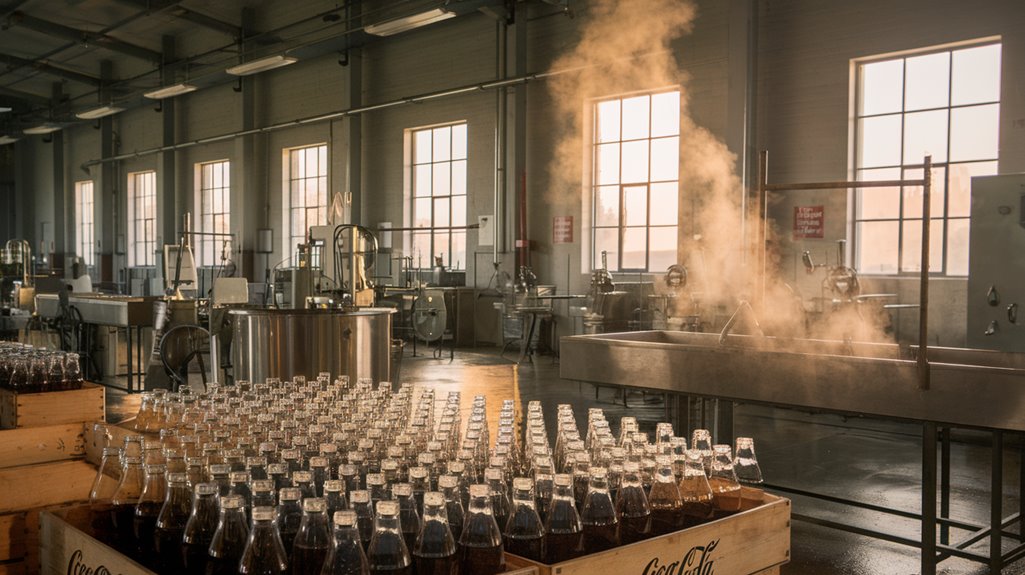
Despite sugar shortages at home, Coca-Cola's wartime strategy focused on an ambitious global mission: bringing a taste of America to soldiers worldwide.
With General Eisenhower's support, the company deployed 148 "Coca-Cola Colonels" to establish 64 bottling plants near combat zones, creating a network that would later fuel its international expansion.
You'll find that Coca-Cola nostalgia runs deep in military history, as the drink became more than just a beverage—it embodied wartime camaraderie and American values. President Woodruff ensured troops could enjoy their favorite drink by keeping Cokes at five cents per bottle regardless of location.
From remote military outposts to POW camps, soldiers shared moments of comfort over an ice-cold Coke, cementing the brand's global appeal that would flourish in the post-war era.
The company even created a special clear version for Soviet Marshal Zhukov, proving its adaptability in crossing cultural barriers.

